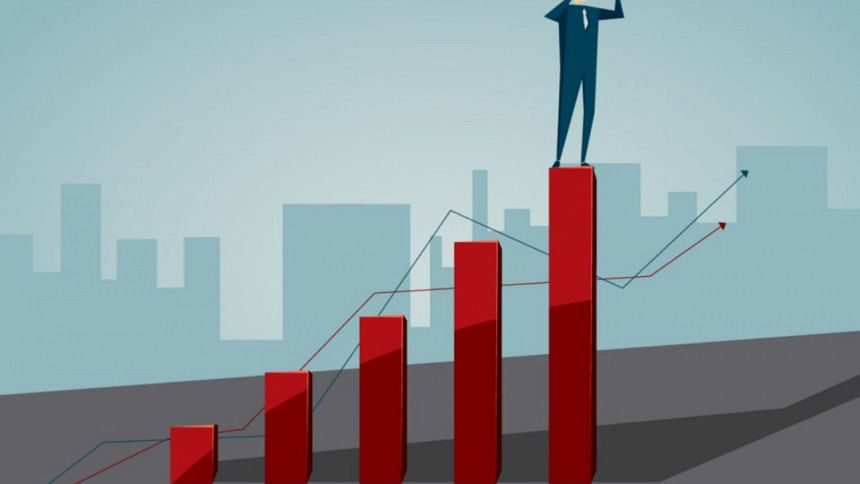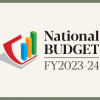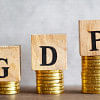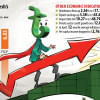How to benefit more from GDP growth

At a recent press conference, representatives of the World Bank (WB) questioned the 7.65 percent economic growth estimate and the estimate of 7–8 percent growth of domestic demand that the Bangladesh Bureau of Statistics (BBS) came up with for FY17-18. Zahid Hussain, lead economist of the WB's Dhaka office, said there are two causes that could lead to such a spike (growth of employment and labour income and rise in remittance inflows) but that neither was currently visible. Similarly, the Asian Development Bank (ADB) estimated that the economy will grow at 7 percent, 0.65 percent less than the government's provisional estimate, while concluding that "Bangladesh's economic outlook remains broadly optimistic." Whatever the actual rate may be, what is encouraging is that both the WB and ADB see Bangladesh's economy growing rapidly compared to other countries of the world.
For the WB, it was the "unattended" banking sector "woes" that was the chief concern moving forward. And it further criticised recent government moves to prop up the sector at the cost of the general public and the overall economy. For the ADB on the other hand, it was infrastructure deficit that was most worrisome, as it explained that sustained high growth requires an expanded industrial base and a diversified export basket, both of which in turn require commercial access to basic infrastructure such as electricity, roads and railways. And Bangladesh, unfortunately, ranks near the bottom globally when it comes to access to all these.
Though the difference in GDP estimates can be debated, the inadequacies highlighted by WB and ADB cannot. The country's banking sector has performed terribly for a consecutive number of years, and while the government continues to take up one mega-project after another, it often ignores basic infrastructures completely as evident from the state of the country's roads and highways. Then there is the fact that even the mega-projects almost always cost way more than initial estimates both in terms of time and money.
Even the International Chamber of Commerce-Bangladesh (ICCB) has deemed the growing non-performing loans (NPLs) a curse for sustainable growth, calling on the government to combat the menace more proactively. In its bulletin for the January–March period, the ICCB said that the best way to meet the requirements and challenges of a developing country was to strengthen the capital and liquidity ratio of banks and that NPL has been an issue that has severely impacted the capital adequacy ratio of the sector.
According to a Bangladesh Bank (BB) study covering 2012 to 2016, the average ratio of NPLs to total loans was 27.10 percent. Total banking sector loan till September 2017 amounted to Tk 7,52,730 crore, of which Tk 80,307 crore, or 10.67 percent, was bad debt. Once restructured loans were included, NPL went up to 17 percent of outstanding loans.
The ICCB also pointed out that regulators have allowed banks to regularly restructure bad loans which has allowed banks to further lend to the same borrowers. Between 2010 and 2014, an average bank rescheduled bad loans of Tk 10,910 crore annually, according to a study of the Bangladesh Institute of Bank Management.
However, while the finance minister himself admitted that loan defaulters "have gobbled up the money that could be invested otherwise" doing great loss to the country, the pressure exerted by his ministry on the BB, that has compromised the independence of the bank to a great extent as experts have opined, has arguably been the prime cause for why it has failed to do its job of regulating the sector properly. What is the result? The banking sector's expansion rate is expected to fall by 1.32 percent in the current fiscal year, according to official data.
With the decline of the growth of the country's financial sector, the BBS said that growth will be driven by double-digit growth in manufacturing and construction sectors. Provisional estimate by the BBS showed that the construction sector, which is one of the 15 major sectors that contribute to GDP, is set to grow at 10.11 percent in FY17-18 from 8.77 percent the year before. Industry growth, meanwhile, is forecasted to pick up slightly to 10.4 percent.
What remains a concern for both, however, as with all other sectors, is that with the tremendous misallocation of resources that is taking place because of problems in the financial sector, these sectors are either not growing as they should or are constantly being exposed to great and unnecessary risks. Given that the construction sector employs some 3.43 million workers, it is, in fact, impossible to measure how great the potential risks are.
Lastly, when it comes to export diversification, infrastructure isn't the only drawback. As experts and educationists have repeatedly said in the past, lack of policy support too has remained a major hurdle. But what has not been mentioned as often is, should our main focus really be on exports?
As the ADB itself has estimated, around 88 percent of employment in the country depend on domestic final demand and only eight percent on final demand from advanced economies—what remains is subjected to demand from the rest of the world. While increasing export is important to stabilise our balance of payment, and so is diversifying exports to mitigate risks, isn't it time to focus more on domestic consumption?
If so, the best way of doing that is by increasing disposable income of people across the board, through tax cuts (mainly for small businesses and low-income groups) and reducing corruption, as it is ordinary people who are usually victims of graft, while its beneficiary are almost always special interests groups. This, and similar other measures, may also help reduce the growing income disparity, which too is essential for sustainable high growth, and may, in fact, be more important than debating over what the GDP growth rate may be, as it is only then that Bangladesh's GDP growth, whatever it may be, will, in reality, benefit all Bangladeshis and thus, the nation in the long run.
Eresh Omar Jamal is a member of the editorial team at The Daily Star. His Twitter handle is @EreshOmarJamal.

 For all latest news, follow The Daily Star's Google News channel.
For all latest news, follow The Daily Star's Google News channel. 








Comments